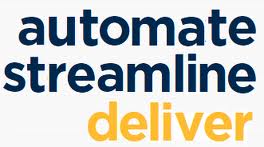By Glade Ross, Rossware Computing, glade@rossware.net
Quite simply, it’s using machine mechanisms to accomplish desired processes, instead of employing direct human labor.
Why is automation often preferred?
Humans are expensive. This is obvious in regard to employed personnel, but it’s just as true (perhaps even more so) in regard to your own time. Any of your energy, time and attention that’s taken for one task detracts from what’s available for another – such as fishing, golf, or maybe even spending more time with your kids. Or, engaging in other business activities that do more to directly advance profit.
In hearty contrast, machines are cheap. A $350 computer will happily labor 24/7 without complaint, for years on end.
Given so massive a magnitude in cost difference, it’s foolish – nea, near criminal – for humans to persist in the performance of tasks, worry and drudgery where super-cheap automation can bear the burden instead.
Let’s be clear. Where work tasks are infrequent, novel and/or unique, the ingenuity, adaptability and sheer brilliance (that are uniquely human traits) may indeed be needed, and therefore appropriate instruments to deploy. But where tasks are more routine and patterned, (and for such reason amenable to brute machine strengths), it is a waste of sheer madness to employ human hands, brains and stress hormones instead. It is wrong, and should not be done.
You likely are not aware of the immense automation available for today’s service office.
For the most part, humans are not needed to answer the phone (your customers can book themselves online, they may confirm or change appointments online, even check on how their tech is running on the day of the appointment, or on progress of the job otherwise). Humans are not needed for acquiring dispatch requests from manufacturers or other third-parties (such reception can and should be automated via direct, computer-to-computer communication).
Humans need not be involved in going laboriously through tomorrows jobs to determine what parts techs should be taking with them (or through yesterday’s to see what parts should have come back). A machine should compile this information automatically, and provide a beautiful interface for a human to indicate what is in fact being moved, and in what direction (of course, the machine further keeps track of where everything is at). A human should not have to labor to determine what needs ordered for restock (a machine should provide the list, and automate the ordering process too).
Humans should not stress through routine reviews of work-in-progress, worrying to assure steps are not falling through the cracks. A machine should do this worrying, and stressing – leaving it to a human to provided needed human input, solely when the machine detects an absence of suitable progress.
Human hands should never touch paper. Well, at least not paper as involved in standard, day-to-day work flow. If human hands are touching paper in these circumstances, it’s a sure sign humans are doing things manually that machines could do better, and via automation.
If your office is appropriately automated, it’s likely you are adroitly managing at least 4 techs per office person (perhaps more). It means you are likely thriving, making more money than most, though with less effort, and much less stress. If you are not appropriately automated, it’s likely your ratio of support personnel to techs is much less favorable, that you worry too much, and work far too hard. Worse of all, it’s likely you’re doing it all for a much smaller bottom line.
The lesson here is simple: Automate!
Automate anywhere and everywhere it’s advantageous. Check out the latest and best software systems, such as ours or others. You’ll be amazed at what automation can do for you.

I agree for the most part except when it comes to automated phone systems. I have never been able to tolerate the endless menues or worse trying to converse with a voice recognition system. I bet if you asked 99.9 % of your customers would also agree.